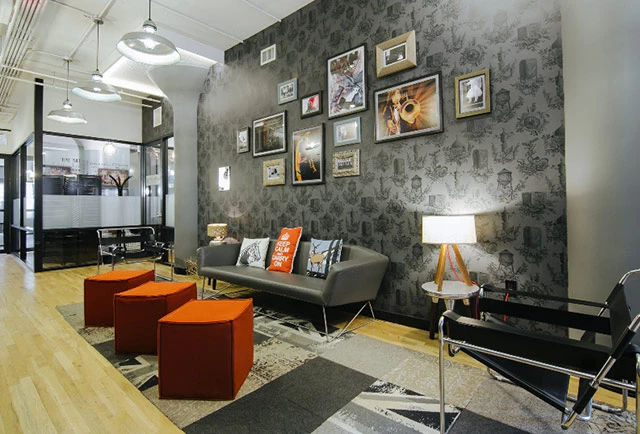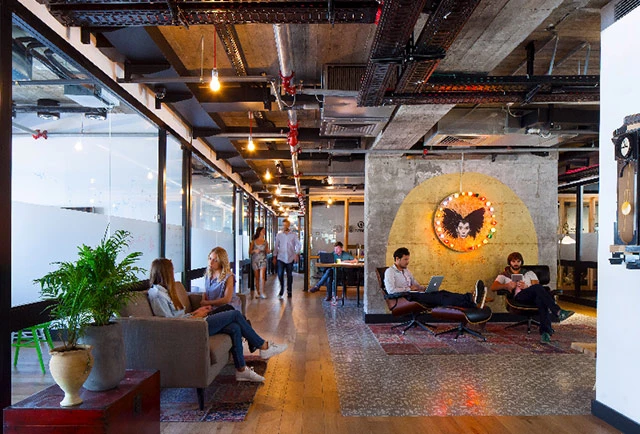- 3 Minute Read
- 11th August 2021
WFH is a pain in the neck for more than 50% of home workers
Prolonged working from home is ruining the posture of many remote workers and causing crippling pain for some. If you are making do, sitting on folding chairs or sofas working at coffee tables for weeks on end, then you’re putting your health at risk.
More than half of home workers report new back pains
The Institute of Employment Studies revealed an alarming increase in musculoskeletal complaints during COVID-19 with more than half of home workers reporting new back or neck pains.
In this article we look at the primary causes of WFH neck and back pain, some best practice solutions and how flexible workspaces might hold the answer for many remote workers.
“Making do” won’t cut it long term
When the coronavirus pandemic took a grip and lockdown was imposed in March 2020, many offices were vacated and Britain’s office workers were told to “work from home if you can”. Now, fifteen months on, that Government advice remains, and many businesses have decided to let staff work from home permanently on either a part-time or full-time basis.
If you are lucky, you have a home office, but most have to choose between working at dining tables, via the sofa, the bed or even the floor. The consequence is that we are adopting poor postures and moving less. A recipe for crippling pain.
Laptops are the worst offenders
Using a laptop without any external equipment (like a keyboard or a mouse) for eight hours or more a day is much more likely to invoke neck or backpain according to Bronwyn Clifford, a Chartered Physiotherapist and ergonomics consultant at Ergo at Work. The reality is that remote workers are missing out on the use of the office equipment they left behind, which had been developed over many years, to provide a health conscious, safe working environment.
“The most important equipment to get your hands on is a keyboard and mouse, followed by a computer monitor, and then a desk and chair” says Robin Christopherson, Head of Digital Inclusion at accessibility charity AbilityNet.
How to adopt the correct desk posture

If you are experiencing neck or back pain, then addressing your desk posture may be a quick fix. innerbody.com offers some sound practical advice on adopting the correct posture to avoid unnecessary aches and pains:
- Support your back – Adjust your chair so your lower back is well supported.
- Adjust your chair – Your knees should be slightly lower than your hips. Your arms should form an “L” shape at your desk.
- Place your feet flat on the floor – Do not sit cross legged.
- Place your screen at eye level
- Keep your mouse close – Position your mouse as close as possible.
- Put objects you need in easy reach – Avoid twisting and stretching.
- Take regular breaks – Avoid sitting in one position for too long.
- Avoid phone strain – Swap your handset for a headset
It’s time to find an ergonomic flexible office

Modern flexible workspaces (i.e. serviced offices, coworking spaces, hot desk workspace etc.) are being increasingly utilised as a great alternative to working from home. Flex spaces are available for short- or long-term rental and offer remote workers a convenient base, often near home, where the environment is purpose built for productive and collaborative work.
Well-designed flexible workspaces prioritise ergonomics, how furniture and equipment functions with people. Getting this aspect right can make a huge difference to wellbeing and reduce the occurrence of back and neck pain, one of the most common work-related injuries. In fact, in a recent survey by office tech company CMD, they found that a third of UK office staff suffer from backache as a direct result of their work environment.
Flexible workspaces prioritise wellbeing

Flexible workspaces prioritise the health and wellbeing of their occupants. Modern flex offices have clean, bright and efficient spaces with carefully engineered acoustic treatments to create an optimal environment for conducting business.
With so many of us now working remotely or on a freelance basis, turning a dining room or comfy sofa into a makeshift office may sound like great options, but our bodies are likely to suffer, which is why a well-designed flexible workspace is the better choice, and could be the answer to your WFH neck and back pain.

